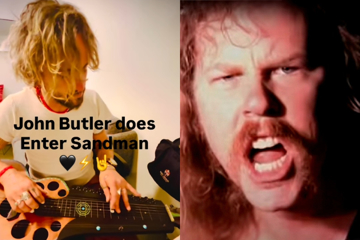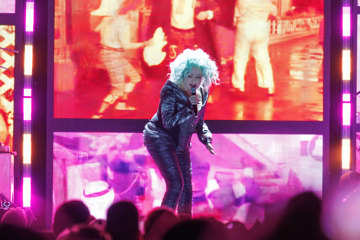'Assassin's Creed' Is Overly Convoluted And Logically-challenged
"Humourless, sexless, joyless."
Assassin's Creed

It’s always impressive when a film treats the simple notion ‘makes sense’ as non-essential. So it goes with Assassin’s Creed, a movie that’ll do little to reverse the common-held wisdom on video-game adaptations. Made — weirdly — by Australian auteur Justin Kurzel (Snowtown, Macbeth), the film has plentiful problems: it’s humourless (literally, there’s not a joke herein), sexless, joyless. But, chief of all, it’s overly convoluted and logically-challenged, a film that takes its video-game set-up and makes it far more confusing than necessary.
Kurzel and stars Michael Fassbender and Marion Cotillard came to the project fresh off their dark, delirious, nightmarish Macbeth. The approach, here, could be the same: take an arcane, culturally-specific text, trim off the fat, and deliver it with a cinematic vision that can make the drama feel universal. Instead, Assassin’s Creed doubles down on the unnecessary elements of the tale, endeavouring to embolden the ‘mythos’ rather than just stick to the action.
Don't miss a beat with our FREE daily newsletter
Fassbender stars as BMX teen turned death-row dickhole, a lawless, macho jerk who’s brought back from the dead —and/or official execution— by a sinister sci-fi cabal presided over by posh father/daughter team of Jeremy Irons and Cotillard, who tend to white-uniformed prisoners in a gleaming modernist fortress. It’s hard not to roll your eyes, and to take such a dire portrait of generic masculinity seriously as a hero, but, hey, soon enough Fass is strapped into a machine that taps into his DNA, and whooshes him about with a giant mechanical CGI arm —mock lens-flare flarin’ like wild— whilst he ‘relives’ old genetic memories where his ancestors killed people.
It’s an embarrassing set-up, but when Fassbender is suddenly flung back to a dustbowl 15th-century Spain, and given a mission, all is momentarily forgiven. He’s part of a band of hooded assassins, set opposite Greek-weird-wave icon Ariane Labed (seriously, the cast for this is bonkers), who’re out to dodge execution as heretics in the Inquisition. Soon enough, there’s a horse-and-carriage chase-scene breathlessly barrelling along; a great action-film sequence in which figures leap from carriage to carriage, horse to horse, and occasionally spill out onto the desert floor. Yet, its rip-roarin’ lustre is weakened every time Kurzel cuts away to Fassbender wobbling about in the skill-tester; and, when it’s suddenly over, and you’re stuck back in the generic not-too-distant-future of gleaming glass and polished floors, you feel ripped off.
This is, essentially, the way Assassin’s Creed unfolds: as the trips into the past get better, the modern-day stuff gets worse. Charlotte Rampling shows up —seriously slumming— as the toffee overseer of the whole modern-day cult; Brendan Gleason gets a generic scene as the dad Fassbender hates; and Cotillard delivers all manner of cod-philosophisin’ mumbo jumbo, in a mannered, stilted, glassy-eyed turn light-years removed from her amazing career work. She’s out to eradicate violence, or aggression, or whatever; with criminality(!) apparently a hereditary trait housed in our DNA. If that’s not enough, there’s also a ridiculous MacGuffin (the Apple of Eden!) that contains “the genetic code for free will”(!) and, for reasons that remain wholly unclear, a prisoner uprising amongst the white-outfitted.
Yet, for all the wonkiness of its scripted drama, the action sequences in Assassin’s Creed are awesome. Shooting in Spanish deserts and Maltese villages, they’re hot, dusty, dirty, sweaty; breathlessly edited, adventurously staged, and filled with real, actual stunts. Where the modern-day shit feels painfully shot on a digital backlot, the sequences set over 500 years ago feel more tangible, more relatable, more vital. Sure, they’re effectively modern-day extreme-sports bro-outs in hooded-assassin threads —parkour up laneway walls and across rooftops; wingsuit dives from on high— but there’s an undeniable thrill to them. Best is a sequence in which Fassbender and Labed are to be burnt at the stake —and you feel the flames, bloodlust, and religious hypocrisy— only to stage an unlikely escape; Kurzel, as with Macbeth, using smoke and tumult to create a sense of disorientation in combat.
Sadly, as always, these adventures in the past must end. If only this film opened with Fassbender being plugged into a machine, and then we spent the rest cavorting about a grimy 15th-century setting, Assassin’s Creed would be a modest delight. Instead, with each return to the past, Kurzel cuts away more and more mid-mission; supposedly mirroring our growing concern for Fassbender’s dickhole character, and the fate of the giant robotic-arm machine. Eventually, Fassbender breaks the game, somehow; becoming all times at once, or something. I don’t know, it didn’t make much sense. So it goes for Assassin’s Creed, where unnecessary exposition begets confusion, and a host of great action sequences are tossed into a soupy farrago of po-faced sci-fi nonsense.
EDGE OF SEVENTEEN

Attention Andrea Zuckerman fans: does Edge Of Seventeen have some amusing American-adult-playing-teenager action for you. In this portrait of adolescent angst, Hayden Szeto is cast to play the key love-interest, a dorky animator. He is 31 years old. Edge Of Seventeen is, largely, that kind of film: taking place in the bland nowheresville of the archetypal American high-school; filmed, of course, in Vancouver. All the clichés of the genre are here: female klutziness, good-lookin’ jocks, house parties where people hold red cups, cut-out cliques and upward/downward social mobility, key teacher speeches interrupted by the ringing of the bell, bad-boys pressuring virgin girls to have sex with them in cars.
But, gladly, in spite of all the old tropes, Edge Of Seventeen (not to be confused with the 1998 queer coming-out movie) also has Hailee Steinfeld. Steinfeld’s debut turn, as 13-year-old lead, in the Coen Bros’ glorious take on True Grit, is an all-timer; and, since then, she’s returned to Western frontiers, in Tommy Lee Jones’ The Homesman and Daniel Barber’s The Keeping Room, whilst also doing time in the dire Pitch Perfect 2. Here, she finally gets a role to measure up to her debut, and brings it to life: her lead teen angry, defiant, insecure, pissy, self-obsessed, funny, lovable, horrible.
Kelly Fremon Craig’s —flatly-directed— film is out to capture the way daily concerns blow out to solipsistic psychodramas in the teenage mind, and Steinfeld is up for the task; blowing through the generic hallways of teen-moviedom with a wild, teenaged energy all her own. It’s a must-see performance in a film that you can’t recommend; parse that riddle as you please.
OPERATION AVALANCHE

In one of the decade's great films, Room 237, a host of Kubrick obsessives presented their hot-takes on what Stanley Kubrick’s horror masterpiece The Shining was ‘really’ about. These ranged from psychoanalytical readings to batshit conspiracy theories; the most glorious of the latter being that the film was Kubrick's covert mea culpa for faking the moon landing. Where Room 237 built a shrine to this obsession and apophenia, Operation Avalanche essentially turns it into one, long, winking in-joke; this ‘found-footage’ mockumentary purporting to be an insight into one of the great dreams of the collective tin-foil-hat imagination.
It's the second film for Canadian filmmaker Matt Johnson, whose first, The Dirties, which he starred in and wrote, also posed as a found-footage mockumentary. That film —like most in the genre— inevitably tripped up on its gimmick, failing to justify why the camera would, in so many of its moments, actually be filming. Operation Avalanche solves that problem with a simple set-up: in 1967, a crew of CIA agents (played by Johnson and co-collaborator Owen Williams) go undercover at NASA as a documentary film crew. At first, they’re trying to find a Russian spy, but when the mission changes, they keep the cameras rolling, documenting their efforts to dupe the world.
The movie within the movie becomes way meta: as Johnson and crew endeavour at making movie magic within the film, so, too, does Operation Avalanche do the same. Just as its fictional CIA Men use the technologies of the ’60s —with, winkingly, an assist from Kubrick— to make something that viewers will buy, the filmmakers themselves work tirelessly to make their own film look ‘real’; with various vintage effects, from real to mock, employed to summon the visuals of the era, and actors inserted into historical footage.
To this end, Operation Avalanche is a rousing success; its marriage between past and present relatively seamless. It succeeds, too, in its ultimate goal: pure geeky monkeyshines. Sure, there's little to grab onto, character-wise, no real emotion or feeling; and Johnson remains a sketchy actor, at best. But both the makers and the audience get to delight as every bit of conspiratorial moon-landing-truther evidence —the flag, the footprint, the reflection— is brought up, within the drama, by the filmmakers out to do the fakin’. Like Room 237, it’s neither catnip for obsessives nor mockery of them; Operation Avalanche, instead, an entertaining exercise in entertaining their lunar lunacy.







